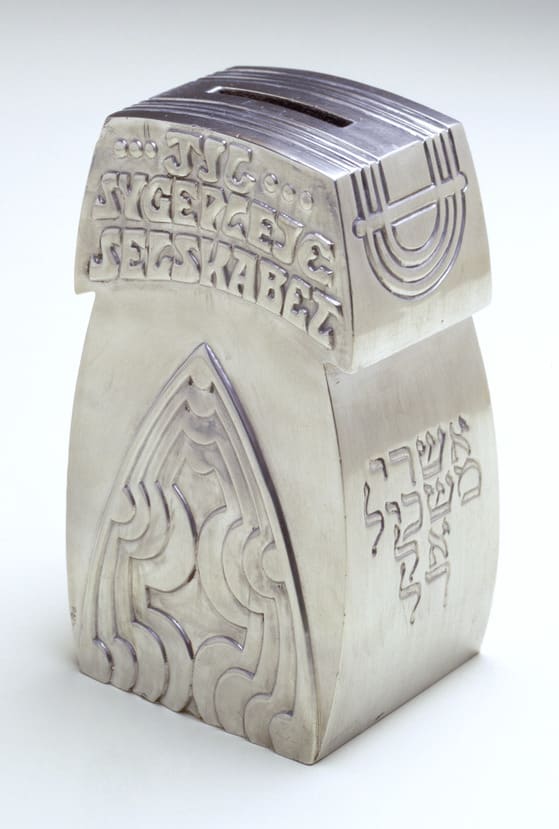
- Object Name:
- Alms Container
- Designer:
- Mogens Ballin
- Bio:
- Danish, 1871-1941
- Designer:
- Siegfried Wagner
- Bio:
- Danish, 1874-1952
- Title:
- Alms Container of the Society for Care of the Sick
- Place Made:
- Copenhagen (Denmark)
- Date:
- 1899-1901
- Medium:
- Pewter: cast
- Dimensions:
- 4 7/8 × 2 3/4 × 3 7/8 in. (12.4 × 7.0 × 9.8 cm)
- Credit Line:
- Purchase: Helen and Jack Cytryn Fund
- Accession Number:
- 2000-52
Not On View
Tzedakah--righteousness or justice--means that every Jew contributes to the community's welfare according to his or her means in order to support organizations that tend to education, the needy, and the ritual burial of the dead. Administering to these needs is considered an obligation, just as receiving help is a right. Traditionally, communal organizations used various objects in the performance of their duties including alms containers to collect funds. This handsome Jugendstil example bears a Danish inscription across the top as well as a biblical inscription in Hebrew and Danish on the sides: "Happy is he who considers the poor" (Psalms 41:2).
This type of alms container was created to replace the older containers of the Society for the Care of the Sick Tiferes Yedidim, which had been founded in Copenhagen in 1821. Two Danish artists collaborated in the design of the container, which was manufactured in a limited edition: Jewish sculptor Siegfried Wagner (1874-1952) and painter Mogens Ballin (1871-1941). The two artists owned a pewter workshop in Copenhagen from 1899 to 1907. Ballin, a Jew who converted to Catholicism as a young man, studied painting at the Royal Academy of Fine Arts. Around 1900 he turned to pewtersmithing in his desire to produce inexpensive, quality objects.
This type of alms container was created to replace the older containers of the Society for the Care of the Sick Tiferes Yedidim, which had been founded in Copenhagen in 1821. Two Danish artists collaborated in the design of the container, which was manufactured in a limited edition: Jewish sculptor Siegfried Wagner (1874-1952) and painter Mogens Ballin (1871-1941). The two artists owned a pewter workshop in Copenhagen from 1899 to 1907. Ballin, a Jew who converted to Catholicism as a young man, studied painting at the Royal Academy of Fine Arts. Around 1900 he turned to pewtersmithing in his desire to produce inexpensive, quality objects.
Information may change as a result of ongoing research.